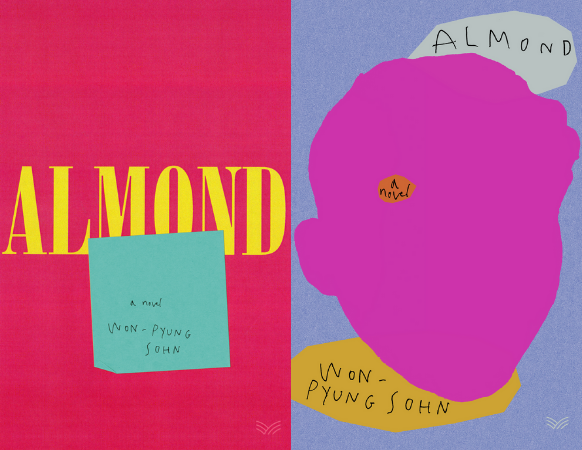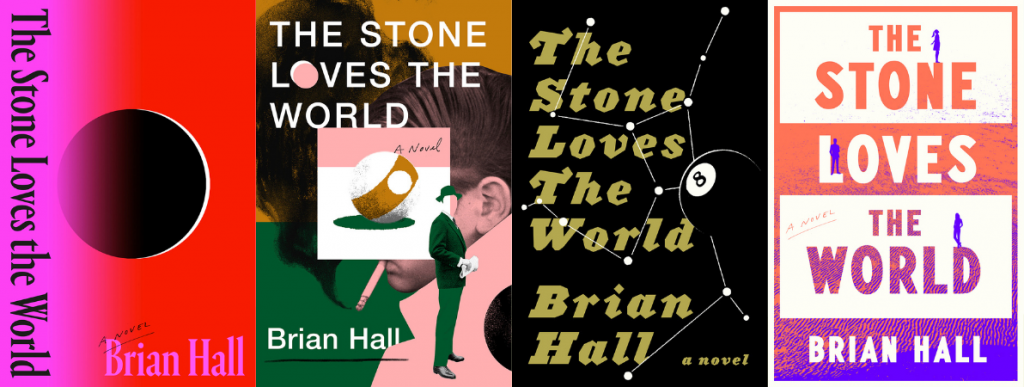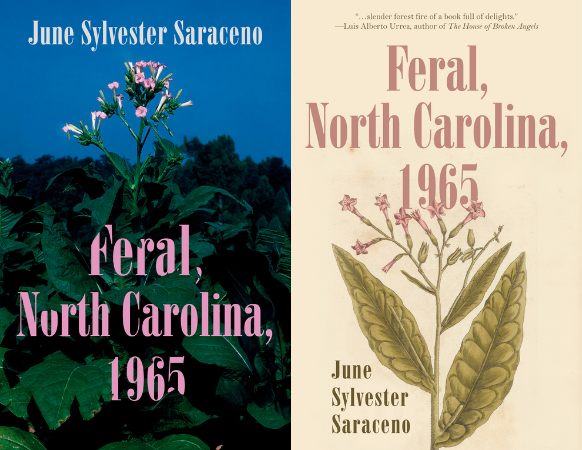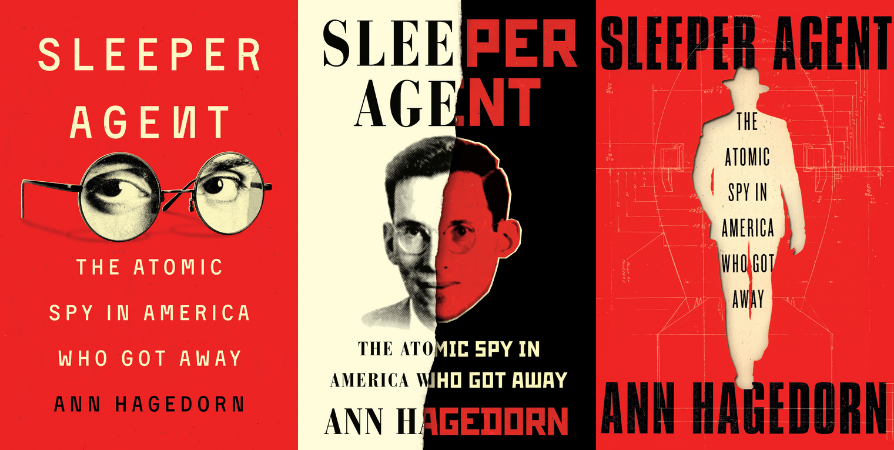If you enjoy reading Electric Literature, join our mailing list! We’ll send you the best of EL each week, and you’ll be the first to know about upcoming submissions periods and virtual events.
While the line “you can’t judge a book by its cover” may still hold some truth, book covers are a work of art. At their best, book covers not only catch the reader’s attention, but give some sense of what you might find inside—and of course, the cover is what you recognize when walking down the street and seeing someone reading in a café, or on the beach or at a well-lit bar. A well-done cover can express the motifs, symbolism, or mood of a book. It can entice a stranger browsing in a library or bookstore, or wink at someone who is rereading a familiar favorite.
In our series on rejected book covers, we look at the process of developing, refining, and sometimes completely rethinking a cover design. (You can see earlier installments of this series here, here, and here.) Here are ten more striking covers—final version on the far right, and you can click any image to enlarge—alongside the designers’ thoughts on their goals and processes.
Sankofa by Chibundu Onuzo
Sankofa is a novel about a middle-aged, biracial woman named Anna who travels from London to Bamana in search of her estranged father. After discovering his diary in her mother’s belongings and meeting some of his former friends, she learns that he was once involved in a radical movement for African liberation in London, before returning to Bamana and becoming the country’s first president. Unemployed and in the middle of a divorce, Anna sells her home and leaves her daughter behind to find her father.
The brilliant and beautiful title is inspired by the word “Sankofa” which is a word in the Twi language of Ghana that translates to “Go back and get it.” Sankofa also refers to the Bono Adinkra symbol represented either with a stylized heart shape or by a bird with its head turned backwards while its feet face forward carrying a precious egg in its mouth. I knew that I wanted to pay homage to this beautiful, metaphorical bird symbol which encapsulates so poetically the main character’s journey to find her father. I illustrated the bird based on reference images of the symbol and used narrow sans serif typography so that the title could be represented boldly and largely along with the author’s name. The sans serif also connects nicely to the bold political nature of the text. The gold color and texture is inspired by the many mentions of gold throughout the manuscript: the pages in an important diary that glowed brightly looked like thin sheets of gold, the gold buttons and gold threads that show up in the piping of uniforms and that are threaded into the hair, the golden toilets, bathtubs and taps that show the division of class which is integral to the story.
I included several variations on the Sankofa bird design in different palettes, with integrations of the bird shapes into the typeface, but also wanted to include a completely different direction that featured a human face for emotional connection. I chose to work with some paintings by Tamara Natalie Madden, whose stunning works are allegorical and whose subjects are of the African diaspora. Some of the paintings feel collage-like due to her use of mixed media and the varying textures, which felt so aligned with this piecing together of a self and a past. Her use of patterning, gold, birds also aligned nicely for this alternate direction.
Most of the team preferred the versions of the Sankofa bird design due to the commercial appeal and boldness. We showed this design to Chibundu along with some additional layouts featuring less playful gold patterning and I was thrilled that she went with our dot pattern which is dynamic and reminds me of the movement of the narrator’s emotional and physical journey in search of her family’s hidden roots.—Nicole Caputo
Almond by Won-pyung Sohn
The final Almond cover was designed and approved in only a few short steps. Author Won-pyung Sohn writes effortlessly with distinct visuals. Yunjae was born with alexithymia, a condition that affects the almond-shaped amygdalae in his brain causing difficulty expressing emotions like fear or anger. In order to help Yunjae, his mother leaves him Post-it notes around their house as daily reminders.
The cover needed youthfulness and simplicity, though the Post-it note alone lacked the emotional weight alternate options had. The final cover was a unanimous decision, since it better reflected Yunjae’s experience delicately navigating adolescence.—Stephen Brayda
The Stone Loves the World by Brian Hall
With a title like The Stone Loves the World, you know you’re going to have your work cut out for you designing the cover. The story is told through different vignettes across three generations from the post WWII days until the present. We learn about the lives, histories, relationships, and connections of a fractured family, while following Mette, a 20-year-old woman who has decided to take a cross-country trip to meet her grandfather and ask him some questions. Both of Mette’s parents try to track her down, which culminates in our three main characters coming together for an impending solar eclipse. Mette’s father, Mark, being an astronomer plays up the importance of the solar eclipse/space imagery, which was featured on a lot of the directions that didn’t make the cut.
The title nods to how each character is quite stubborn in their own ways (an “immovable object”) but learn to open up and resolve their issues. There’s a sweet anecdote in the beginning about Mark’s family playing pool together so I wanted to use the 8-ball as the figurative “stone” and to represent the eclipse (end of the game/new beginning). What ultimately worked for the final jacket was the title, large and central, with the three figures interspersed against a singular landscape. I wanted to play with this idea that the family members are separated into their own compartments, by their own design, but they’re still connected by the world at large.—Colin Webber
Feral, North Carolina, 1965 by June Sylvester Saraceno
Feral, North Carolina, 1965 is a coming-of-age story about Willie Mae, a girl chafing under the expectations of her Southern Christian fundamentalist community. Determined to discover the secrets that the adults in her life are hiding, she uncovers violence and racism boiling just under the surface.
I chose the original photograph of a tobacco plant because of the evocation of the American South and the play in color: the dark, smooth leaves and deep shadows crowned with pink flowers—the type is being enveloped by the plant the way gender roles, bigotry, and brutality threaten to envelop Willie Mae.
However, the publisher felt strongly that the cover needed to have more of an upmarket and Young Adult literature look, but they loved the botanical theme. I dug into the New York Public Library’s Digital Collections and found an illustration of a tobacco plant. Between the pink flowers and broad leaves creeping up on the title, I was able to keep many of my favorite ideas while creating the look SFK was after.—Olivia Hammerman
Women and Other Monsters by Jess Zimmerman
Women and Other Monsters was a treat of a book to design for—the title alone pulls you in! I worked with illustrations that were commissioned for the interior, which I was initially hesitant to do as interior art doesn’t always translate or work for a cover. I took a look and pulled together some designs with Samira Ingold’s art. The beautiful line work ended up working well for the direction I wanted to create (which was contemporary and trade) and with added color, the central figure reads ambiguously (not instantly identifiable) which is exactly what we felt made it a successful cover.
I presented what ended up being the final cover alongside several other designs:
Cover 1: Shows a limited palette where it’s the bold type which peeks through the tangle of snakes and upon closer inspection, you see it’s a portrait of Medusa.
Cover 2: Showcases Medusa again, but here she’s much more prominent and you can see her face profile—highlighting “woman” versus “monsters,” which cover 1 highlighted.
Cover 3: This is a collage of several women monsters which appear in the book. You see a colorful explosion and with this design, I particularly wanted a cacophonous feel—disorienting elements and colors and beautiful faces—with the title and author name floating over it all in black bands.
Ultimately the version chosen which became the final cover was just tweaked a bit more with color adjustments, really pushing the vibrancy and making sure the type remained legible.—Carol Chu
Negative Space by Lilly Dancyger
When the conversation of the cover came up, I had just finished the final round of edits on Lilly’s book. It’s an incredibly powerful memoir about the negative space that is the loss of a parent. The original cover features artwork by Lilly’s father—who is at the center of the narrative—but the more we talked about the direction of the book and what the cover needed to say about the book, we realized that there was one major thing missing from the cover: negative space.
We also agreed that the original cover evoked the feeling of a ‘zine which would be totally appropriate for the art scene in which Lilly’s father moved into during the ‘80s, but it didn’t truly sell the depth of the story within. I sat on the phone with Lilly for over an hour, running through her father’s artwork, trying different iterations of the stark white cover until we came to the rabbit. I sent it off to her and when she opened the file we both said, “This is it.” The rabbit was one of my favorite pieces out of the collection that Lilly had provided for the book; it spoke to me in a way that stuck with me the entire time we were working on the manuscript. I had developed an image in my head that I felt I personally would be attracted to if I saw it on the shelves of a bookstore and Lilly agreed. In the end, the rabbit gave us just the right balance between the art and the swath of negative space that, coupled with the faux typewriter font, just came together exactly as we envisioned it.—Katherine Anderson
Me by Elton John
I was blessed to work on some cover designs for Sir Elton John’s autobiography! I love record collecting and music from the 1970’s, so I was very excited. Elton had expressed one direction: that he should look like a rockstar on the cover. There was a set of approved images to choose from; from there I had carte blanche to take chances on typography, special effects, and how the selected image was used.
I was told to think outside the box and express “Elton” iconically through graphics, typography, or an image cropped in tight. After looking through the images, I loved the overhead one of him playing live. My feeling was that integrating the type with the image would really bring you into that rock n’ roll moment.
The final cover design was not by me, but by James Annal. He has a great post on his design process on The Bookseller blog. In the end, I feel they made the right decision going in this direction, his design feels intimate and personal. My solution and concept, although killed, I am still very proud of!—Philip Pascuzzo
In the Shadow of the Banyan by Vaddey Ratner
In the Shadow of the Banyan by Vaddey Ratner is a harrowing novel that tells the story of Raami, a girl who comes of age during the Cambodian genocide in the 1970s. Based on the author’s own journey of survival, it is also a hopeful novel, and our first few concepts explored using the lotus flower as a motif and symbol for rebirth and Raami’s dauntless will to live. The novel is steeped in folklore, and I tried to capture the richness of the author’s storytelling using shadow puppets as an inspiration. In the end, we landed on a solution that embraces the personal aspects of the author’s story, juxtaposing the tender silhouette of a young Vaddey Ratner and her mother against a ghostly banyan tree that seems to echo the voices of the victims of this brutal period in our world history.—Christopher Forest
Hot Stew by Fiona Mozley
There was already an apt U.K. cover for Fiona Mozley’s Hot Stew when Algonquin Books reached out asking that I design the U.S. cover. The novel is set around a brothel in gentrifying Soho, London. The characters pointedly come from the extreme upper to lower classes. Together, the setting and lives present a piercing and wry commentary on the dictates of ownership, affluence, and the places we occupy in society.
My first inspiration was a spiraling snail shell. The opening chapter “Common Snail” was a metaphorical introduction to themes that followed. Snails hold many positions. They are escargot at an expensive restaurant. They get boiled, then their “chewy pellets [get] picked with forks and fingers, and the curled shells discarded.” Later shells get crushed and scattered around plants to deter snails from eating them. I thought the winding Victorian staircase in the brothel mirrored the shell’s shape as well as the idea of descending class echelons.
The racehorses of the second route conjure that frenetic comparative drive in life to keep up, to get ahead, and connects to one of the wealthy characters who watches horse races. Another character describes how the neighborhood got its name before the city from the sound made by men and the animals they were hunting: “A so ho, a so ho. That’s what they shrieked when they got on their horses and chased deer through the forest.”
Decadent rooms in the novel are draped in this braggadocio of conquest—coats of arms, hunting trophies, and hunting paintings. Secret brothels used to be marked with paintings of swans (a symbol for sex in the Middle Ages) over their doorways. I hoped to combine this high and low art on the cover. Abraham Hondius’s painting of a swan being chased by dogs was perfect. There is much outrage and protest that springs forth from the lower class in the book, which made me think of homemade posters and low-tech revolt. Defacing the pompous picture with graffitied type in a modern hot pink against the aging past snapshots the dynamic raucous of Mozley’s timely tale.—Tree Abraham
Sleeper Agent: The Atomic Spy Who Got Away by Ann Hagedorn
When we were in the conception stage, the editor described the book as non-fiction espionage that reads like a thriller, “a real-life The Americans.” There’s a wealth of Russian design from the period to pull from and I wanted to riff on this, but also try an option that was doing something unexpected.
I started by watching all six seasons of The Americans. This did absolutely nothing to help with the design process, but it’s a really good show, you should watch it if you haven’t.
I liked the round-rimmed, Russian-looking glasses as an icon that would signal “spying.” The disembodied eyes in the glasses pushed this idea further. The type looked angular and vaguely Russian but not so on-the-nose as an actual constructivist typeface. I really liked that this comp didn’t look like other books of its kind, but I knew they’d probably kill it because of this. I flipped the “N” in an effort to pull it back into the Russian espionage genre.
“This belongs in an optometrist’s office as far as I’m concerned” was the editor’s response. Ah well.
The “split” cover was a fun way of showing the duplicity of the Soviet spy. One side being a straight, classical type treatment and the other looking like a Soviet propaganda poster. This wasn’t anyone’s favorite, nor was it mine. Legibility was probably an issue.
I came across the bomb schematic in my image research and knew that I wanted to use it for something. Having a tear in it revealing the subtitle seemed cool—having the tear be in the shape of a man “getting away” was cooler. The team liked that it checked both the non-fiction and thriller boxes and this is what became the final cover.
I still like the glasses.—David Litman









